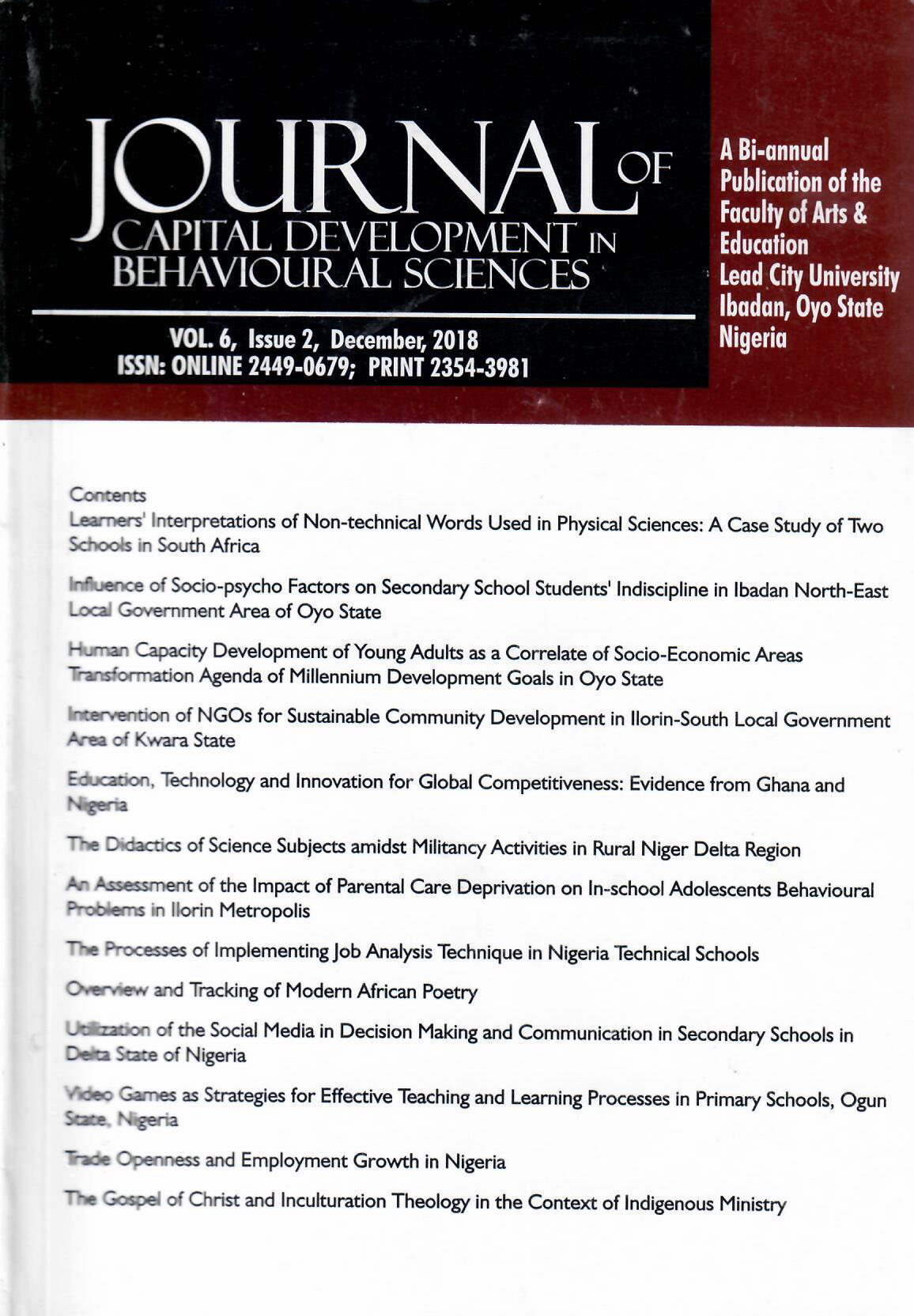Trade Openness and Employment Growth in Nigeria
Keywords:
Trade openness, employment growth, stagflation, Phillips Curve, Keynes TheoryAbstract
This study sought to find the impact of trade liberalization on employment
growth in Nigeria from 1981-2016 using trade openness as proxy for
trade liberalistion. A three-prong estimation approach was adopted. In
the first stage, the descriptive statistic was examined in order to
understand the nature of the series. The stationarity of the variables
were also tested using Augmented Dickey fuller test. The result indicated
that all the variables were stationary at first difference which necessitated
the deployment of the Johansen co-integration and Vector error
correction model for both the long-run and short-run nexus amongst
the variables in the second stage. The Toda Yamoto test was also
conducted to ascertain the direction of causality. In order to determine
the ripple effect of the introduction of economic shock, the Impulse
Response Function was deployed. In the post-estimation stage, the
robustness and validity of regression model is checked using the
Heteroscedasticity and the autocorrelation tests. The study found a negative and significant relationship between trade openness and
employment growth. The foreign direct investment had significant impact
on employment levels. Inflation although significant was negatively
related. Both the exchange rate and terms of trade were not significant.
The result of Breusch-Godfrey Serial Correlation LM Test reveals the
absence of serial correlation. The government should enact the provision
of social and economic policies required to protect the country against
the adverse effects of lowered trade barriers especially in the labour
intensive sector of the economy

